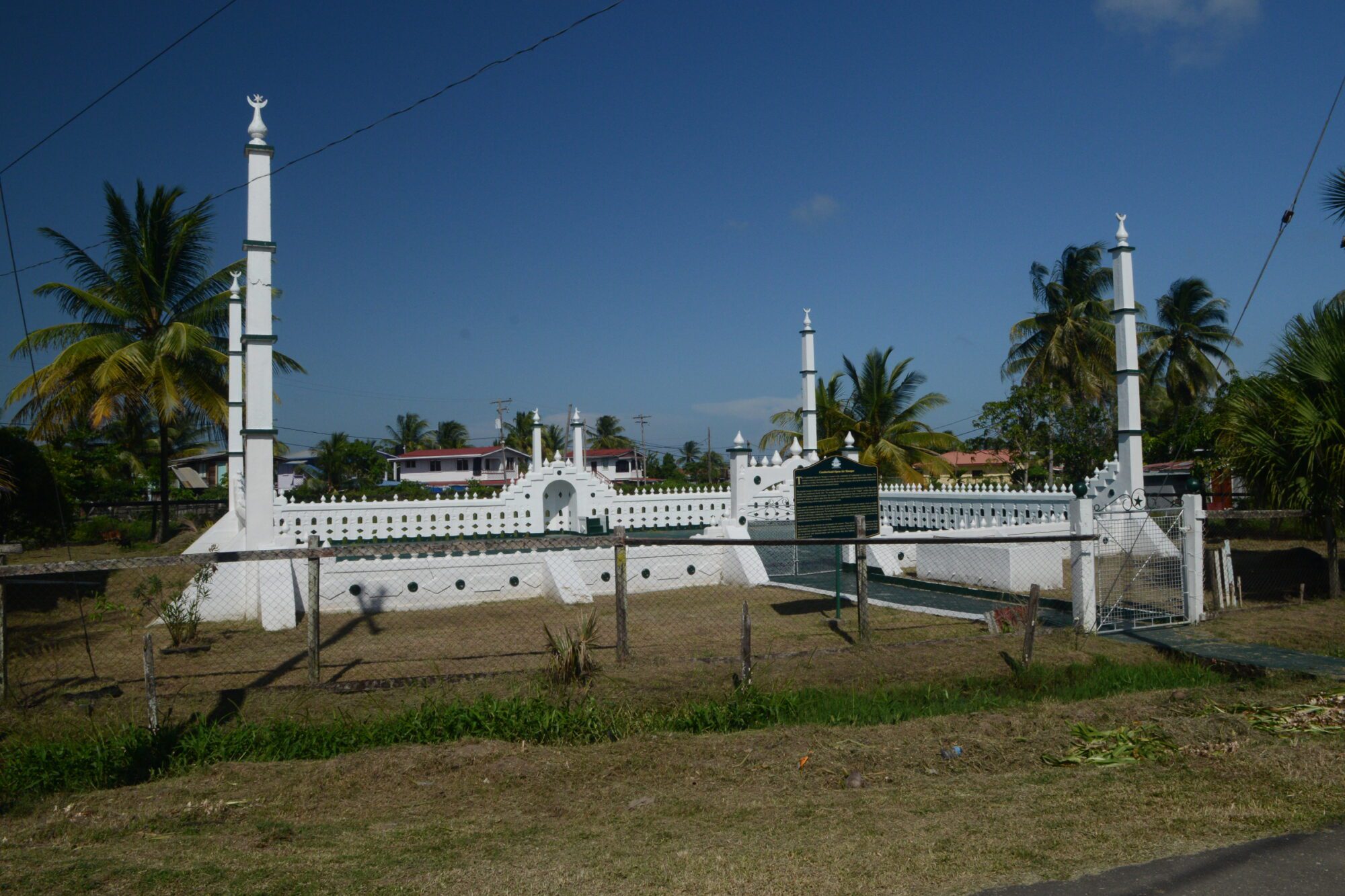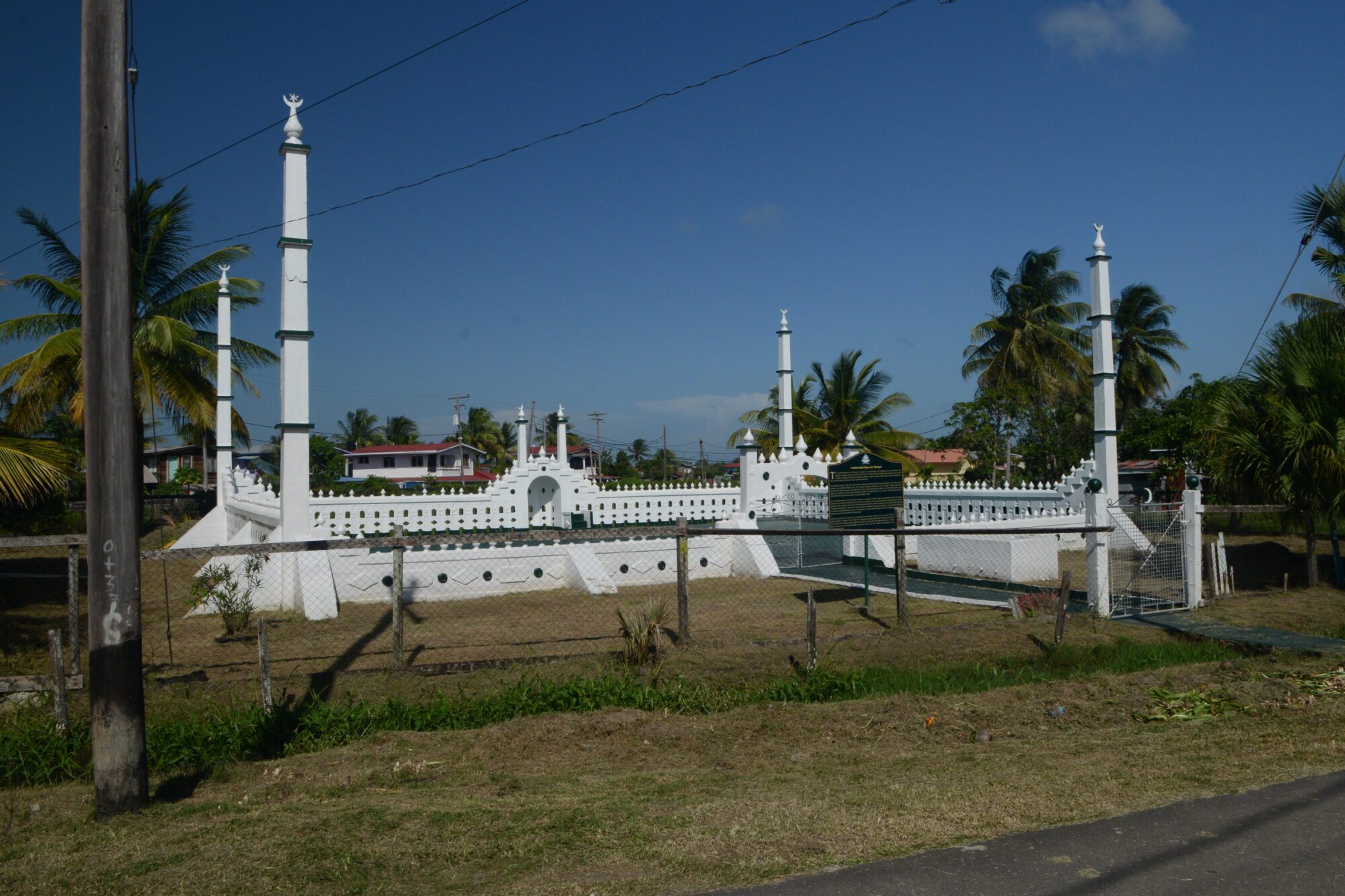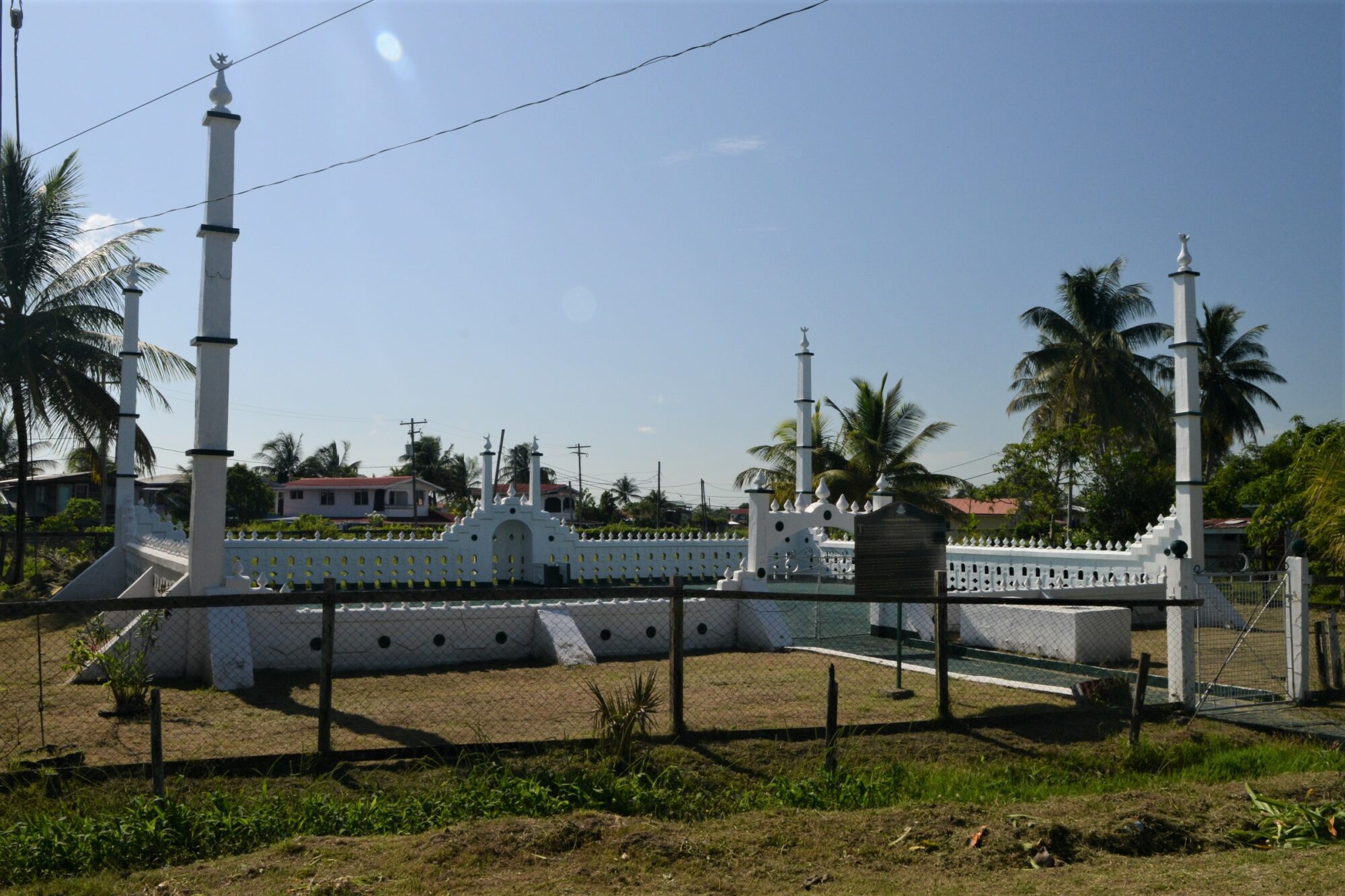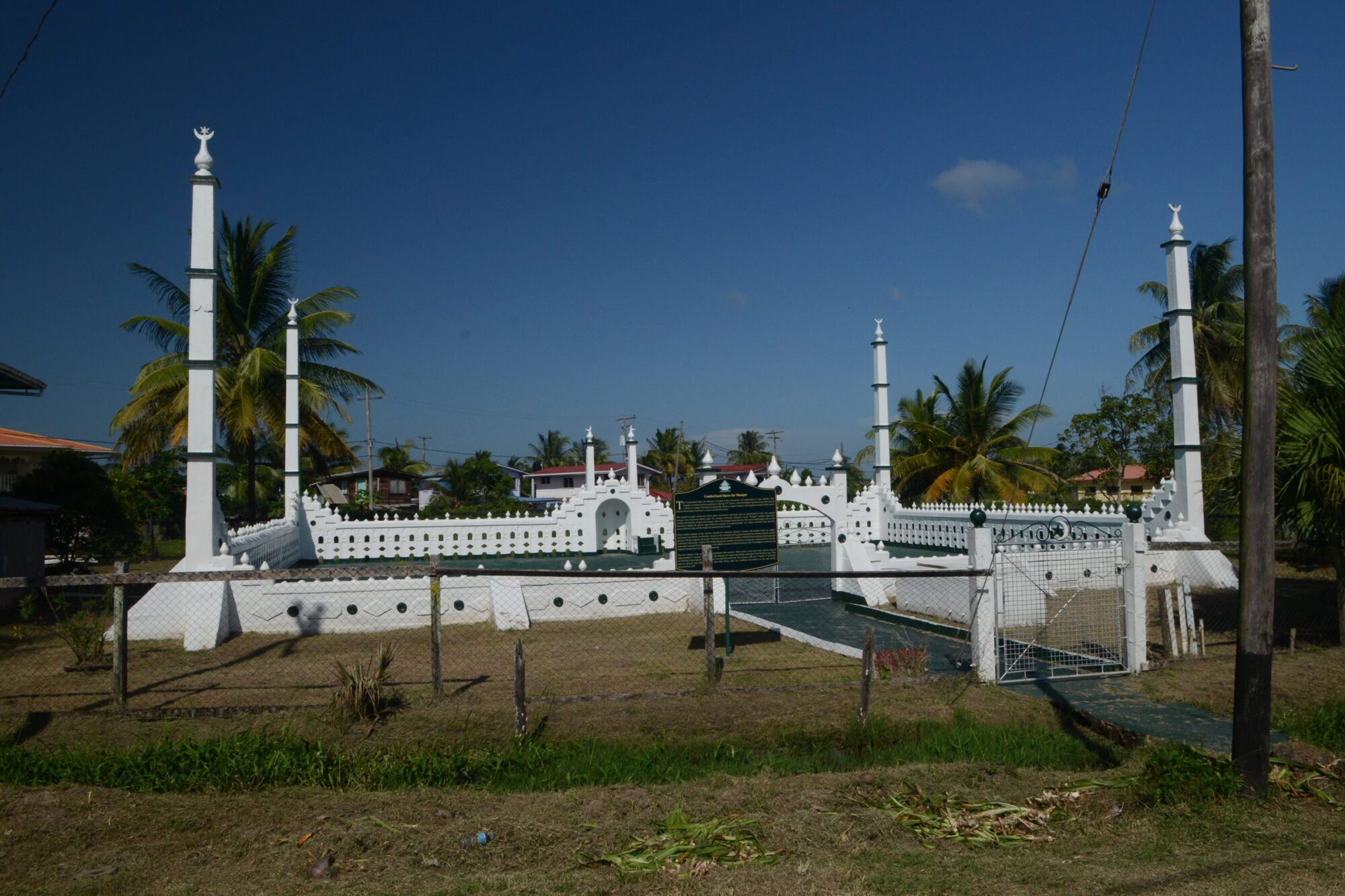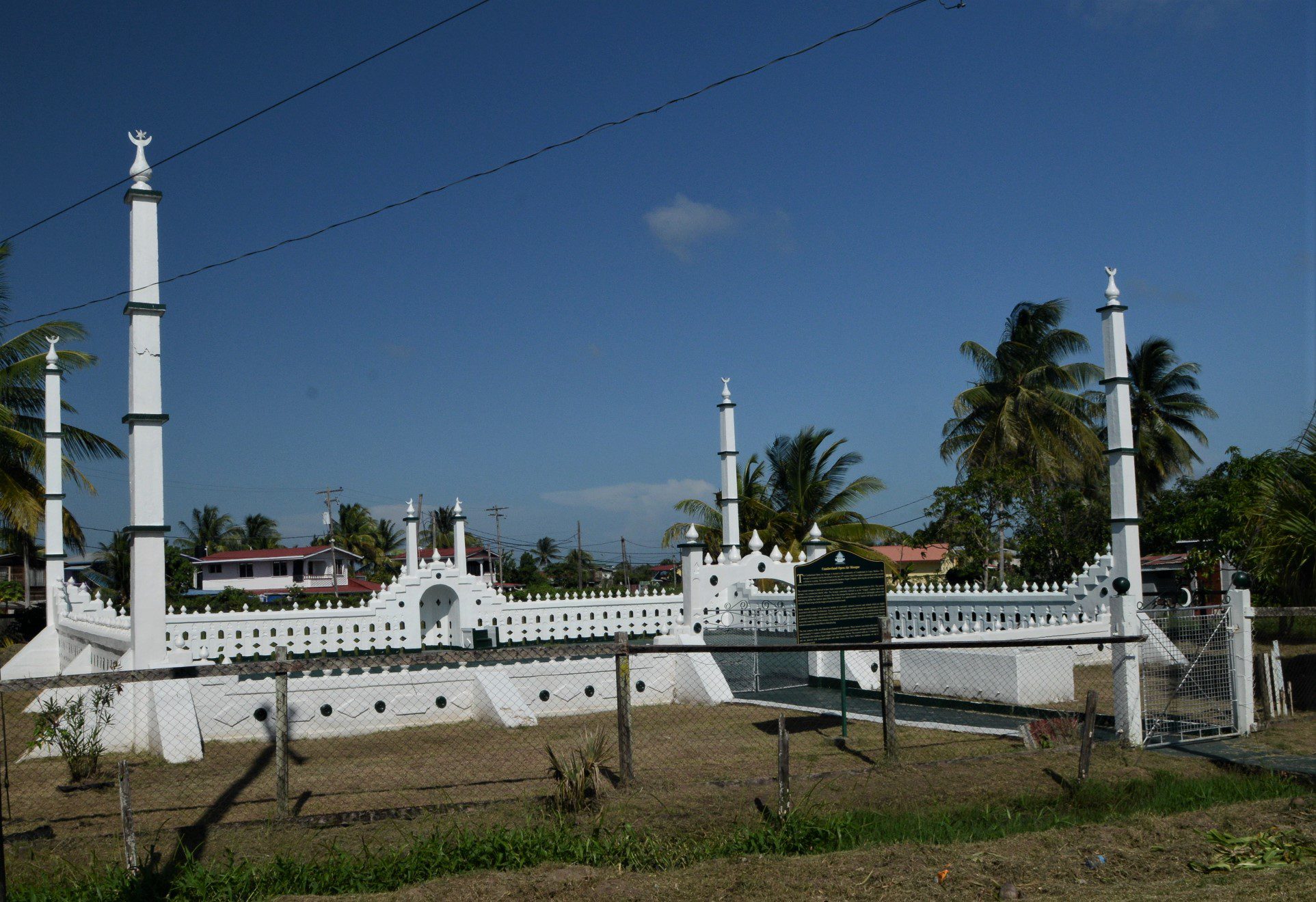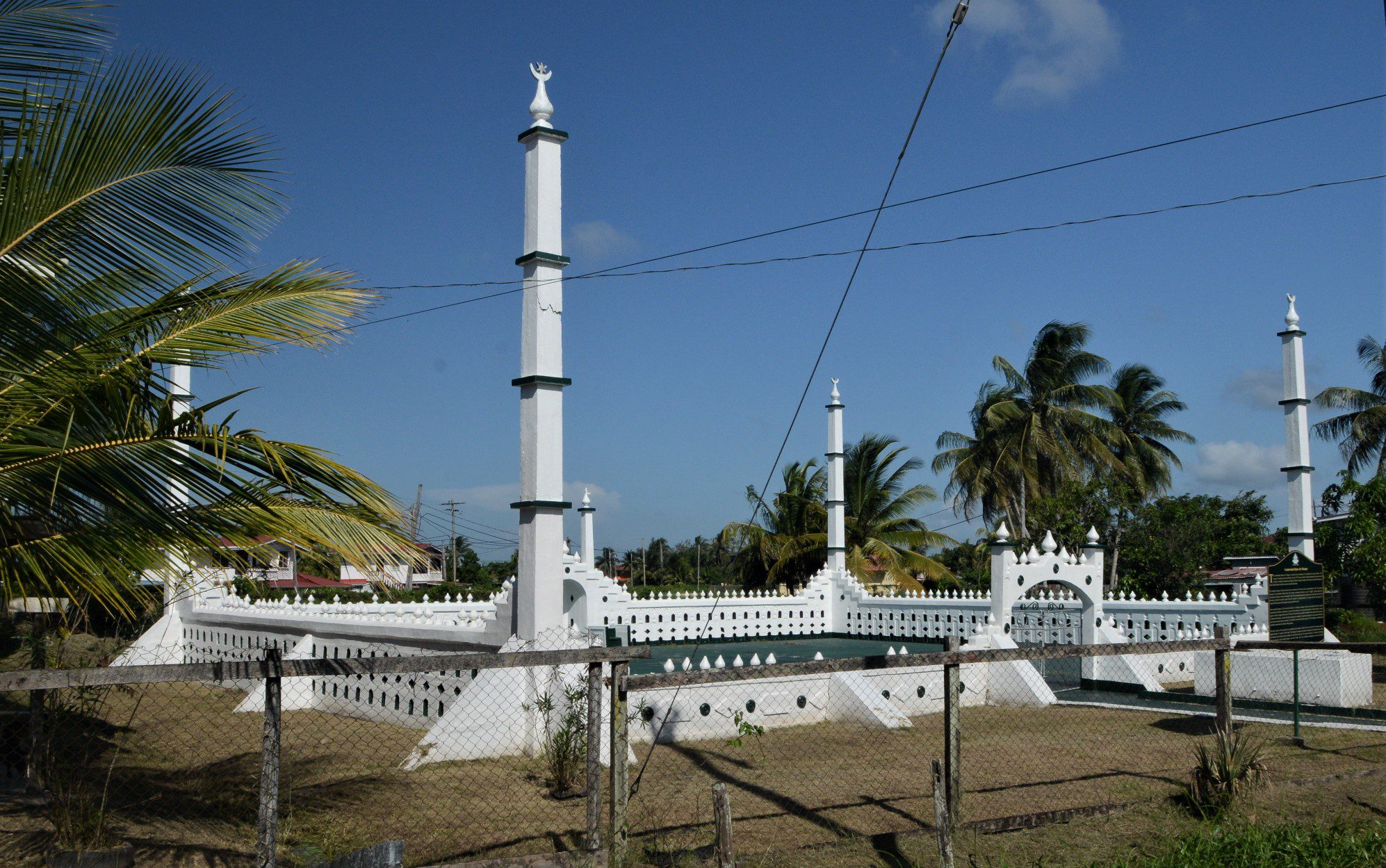Location: Canje, Berbice
Classification: Religious
Period/ Year Built: Current structure built circa 1932
Historical Background / Description:
The Cumberland Open-Air Mosque is located in the community of Cumberland in Canje, Berbice. The mosque’s existence can be traced back to the late 19th century when East Indian indentured servants erected a shrine to worship in. The land was donated by Bookers Sugar Company allowing the servants in that area to observe their Islamic festivals in a more centralized location.
The original mosque is believed to have been constructed with bricks and was demolished in 1932. The current mosque was constructed shortly after. The mosque commonly referred to as the “Eidgah” exhibits India style architectural features of openair mosques. Due to the mosque being open-air, there are no full height walls or roof structure to define the interior space from the external. It is approximately 12.2 metres (40 feet) wide and 24.4 metres (80 feet) long with the longer axis placed north to south.
Some notable features of the structure include its courtyard, minarets (towers) and mihrab which are highly associated with Islamic Architecture. Access to the courtyard can be gained through the centrally placed, western gateway which is topped with an arch. The arch is decorated with a number of bulbous forms and the entire structure is adorned with bosses, a button like feature placed on a number of structures during the colonial period. Directly across the courtyard from the entrance, is the mihrab, recessed within the eastern wall. Worshippers would face the mihrab to ensure they face Mecca when praying.
The four corners of the structure are accentuated with minarets. These towers were built with concrete and are approximately 9.1 metres (30 feet) high. The minarets are square and slender, and tapers from bottom to top. They are finished with a bulbous figure topped with a half moon and a star. The western walls are 1.5 metres (5 feet) high, and are pierced with diamond-shapes and other forms; they have bulbous decorations on top and surface decorations as well.
